If you’ve ever been to the Louvre — or to any large museum, for that matter — you know that the experience extends far beyond the observation of art.
It’s often just as much about people watching. Artist Michelle Ramin, 34, was recently able to live her dream of strolling through the Louvre, but as she battled her way through throngs of iPhone-wielding patrons, the endeavor quickly morphed into something akin to an anthropological study.
While she was obviously stricken by standing in the presence of the world’s most famous works of art, what stuck with her afterward was the humanity of her journey through a lifelong dream.
Born out of her fascination with technology, viewership, and distance, she created a collection of oil paintings called “Jetlag,” which gives viewers are more genuine look into what really goes on inside those walls.
In a brilliant turn, this collection makes subjects of people who make subjects of art. It is through a process of removal that Ramin sheds authentic light on what is usually presented as a gilded, glittering, aspirational experience.
Her first attempt at wandering through the world’s largest art museum lasted three exhausting hours spent climbing over people who were less worried about looking at art than they were about being seen looking at art.
She and her husband needed a break from the tedium, and that break ended up lasting three days. Ramin dreaded the idea of entering the fray once more, but she hadn’t yet seen the Mona Lisa. Begrudgingly, they threw themselves back into the crowd.
Unsurprisingly, they were met with much of the same — rooms full of missed connections. Viewers stood nose-to-nose with incredible art and shoulder-to-shoulder alongside each other, but if you look closely at these paintings, you’ll see that physical proximity and closeness are two very different things.
“This is what life is now,” she writes. “Waiting in line is no longer about making awkward eye contact with your neighbor and striking up a conversation about the weather. It’s about living alone in our worlds through glowing screens.”
After hours and hours of trudging through crowds and confronting disheartening epiphanies, Ramin finally found herself standing in front of the woman she flew thousands of miles to see.
“As I turned the corner to enter her room, I had goosebumps,” she said. “This is the most famous piece of art in the world, and I’m finally getting a chance to see it!” But what she was met with was not an up-close and personal meeting with the Mona Lisa and her famous smile.
“She was hidden behind a sea of endless faces. And not just faces, but cell phones and screens and cameras and arms stretching as far as they could. It was as if to say, ‘Well, if we can’t get a moment alone with the painting, maybe our phones can!'”
What started as a journey through art history ended with two people crawling through what may be the biggest trial of our times, but it is certainly not an experience she regrets.
“Rather than rely on the endless flood of photos from social media,” she writes, “I use oil painting as a means to force myself and the viewer to slow down and dissect these moments of group interaction and disconnection.”
“This process has led me to a deeper questioning of art history’s evolution. How will the canon of essential art be considered once it becomes another set of digital blips on social media?”
Although no one has answers for any of the questions posed by this collection, equally valuable knowledge can be gleaned from the act of asking them.
To keep up with Michelle Ramin’s work, be sure to check out her website. If you live near Portland, Oregon, you can see this collection on display at the Duplex Gallery between June 2 and June 30, 2016! Check it out on Facebook for more details.

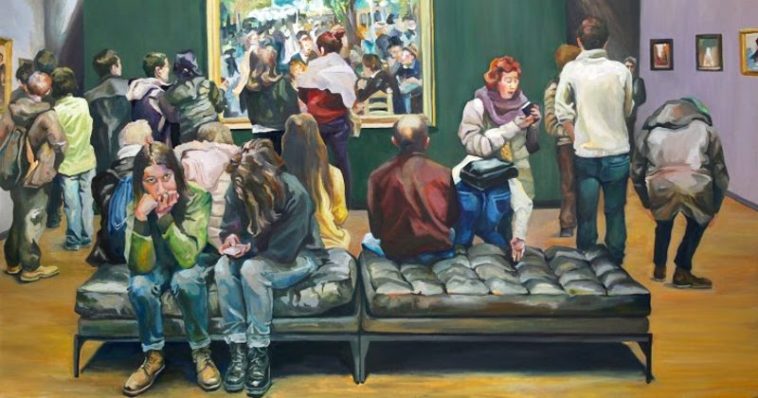
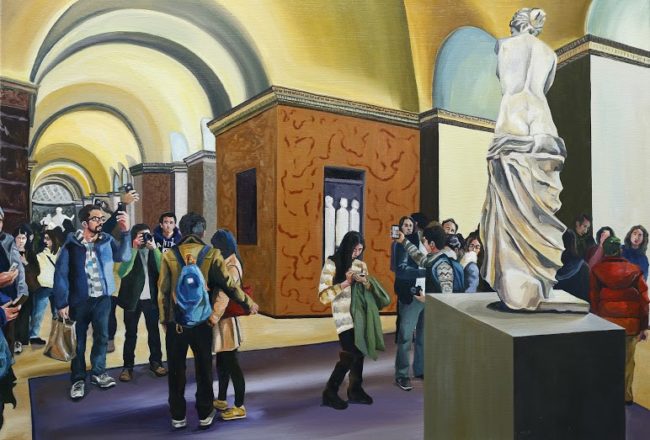
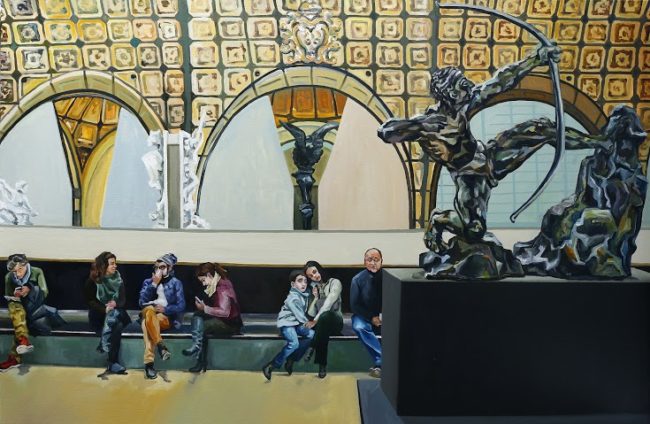
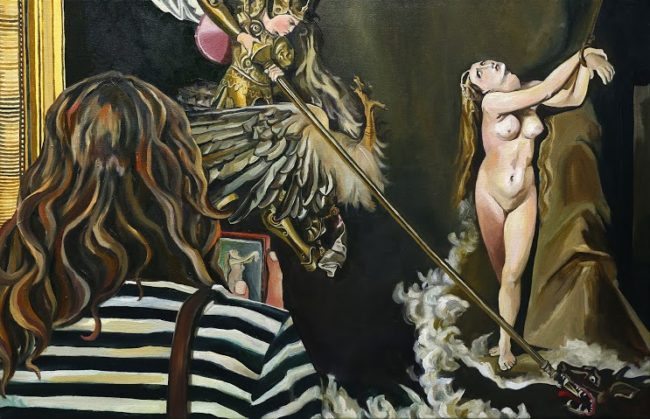
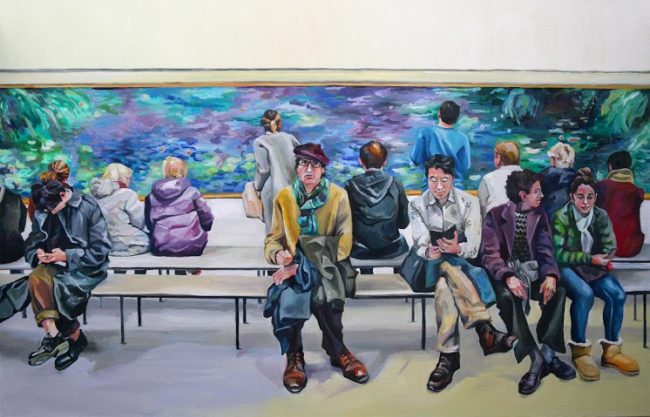

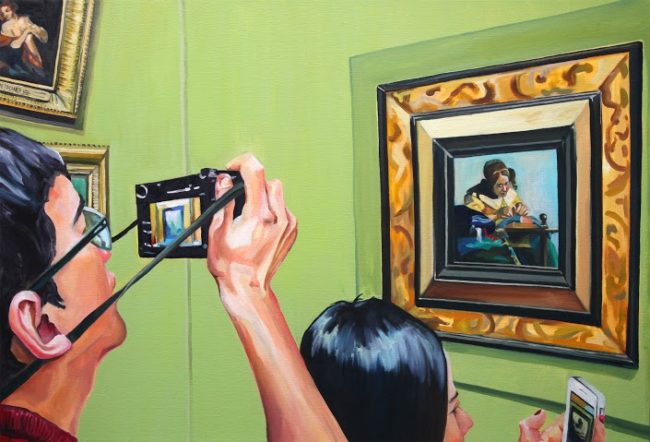
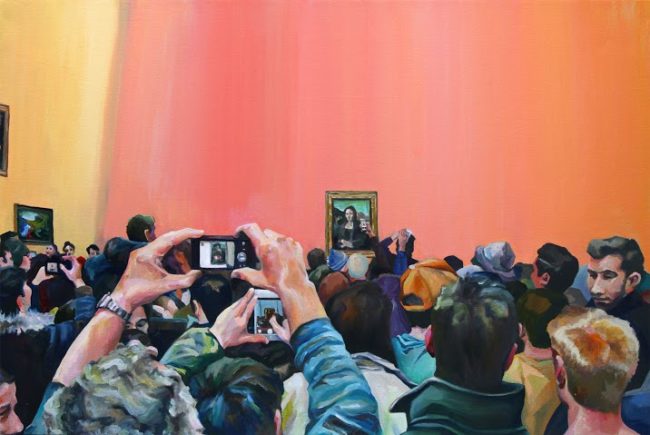
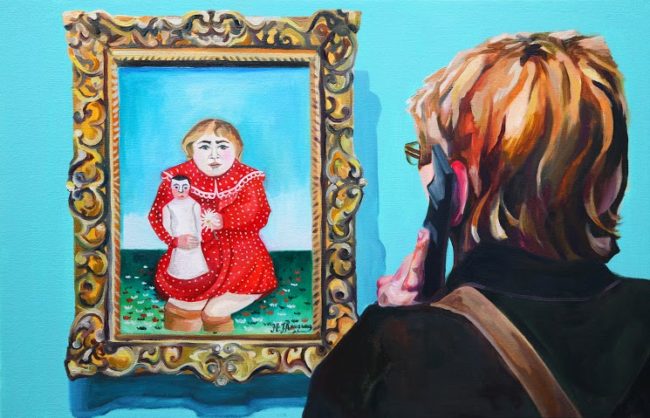
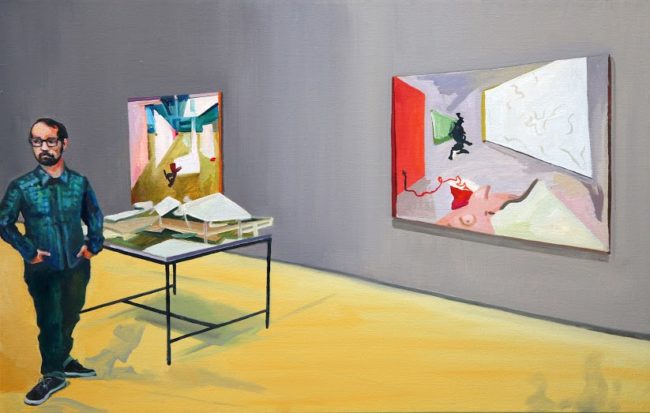


Comments